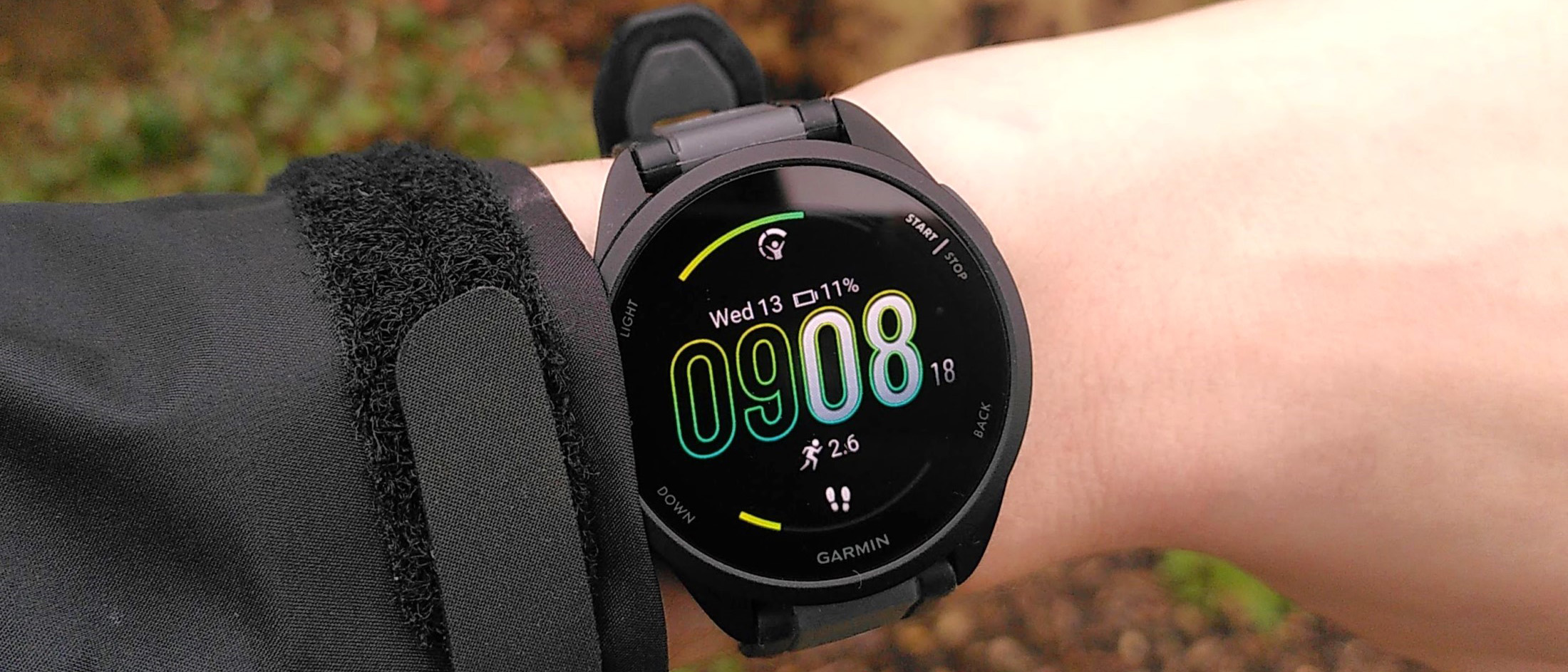Advnture Verdict
The Forerunner 165 is Garmin's first entry-level running watch with a bright AMOLED display, and is brimming with tools to help beginners nail their first race or start shaving time off their PBs. It's a shame that its GPS seems to perform poorly compared to other Garmin watches. This may not be a deal-breaker for new runners, but I'd be more inclined to recommend they take a look at the Forerunner 255 or 265 instead for a watch that will grow with them.
Pros
- +
Lightweight and slim
- +
Bright AMOLED touchscreen
- +
Extensive run training tools
- +
Can import running courses
Cons
- -
Over-sensitive nap tracking
- -
GPS inaccuracies
- -
No sleep coaching
You can trust Advnture
Recent updates
This review was updated on March 12, 2025 to reflect the latest prices and information available for this model.
Garmin Forerunner 165: first impressions
• List price: $249.99/£249.99 (standard), $299.99/£289.99 (music}
• Case size: 42mm
• Weight: 32g
• Display type: AMOLED
• Water rating: 5m
• Best use: Running
The Forerunner 165 is a new entry-level running watch that’s similar to the budget-friendly Forerunner 55 in terms of features, but sports a bright new AMOLED display that’s much more attractive, far brighter, and allows you to see more text and stats on screen at once. It makes it a more tempting prospect for anyone thinking of switching over from an Apple Watch to something designed specifically for running, and gives budget watchmaker Amazfit a run for its money.
The Forerunner 165 comes in just one size, with a 42mm case, but comes in two versions: standard (shown here) and a music edition that allows you to download songs from Spotify, Deezer, or Amazon Music to enjoy on your wrist via Bluetooth running headphones, without the need to carry your phone.

Both editions have a reinforced resin case and silicone band as standard, but the music version offers a wider choice of colors. The standard watch is only available in black and white, while the music edition also comes in vibrant turquoise/aqua and berry/lilac.
It’s light, tipping the scale at 1.38oz/39g (only 2g more than the Forerunner 55) and you won’t notice it on your wrist, even when you’re sprinting. At 0.46in/11.6mm it’s also slim for a running watch, and will slip under all but the tightest of base layers. My trusty Fenix 7S is noticeably chunkier at 0.45in/14.1mm thick, and far heavier at 2.23oz/63g.
The Forerunner 165’s case features Garmin’s usual array of five physical buttons, but unlike the Forerunner 55, there are also touch controls (though you can disable these if you prefer, and they are inactivated by default during activities).
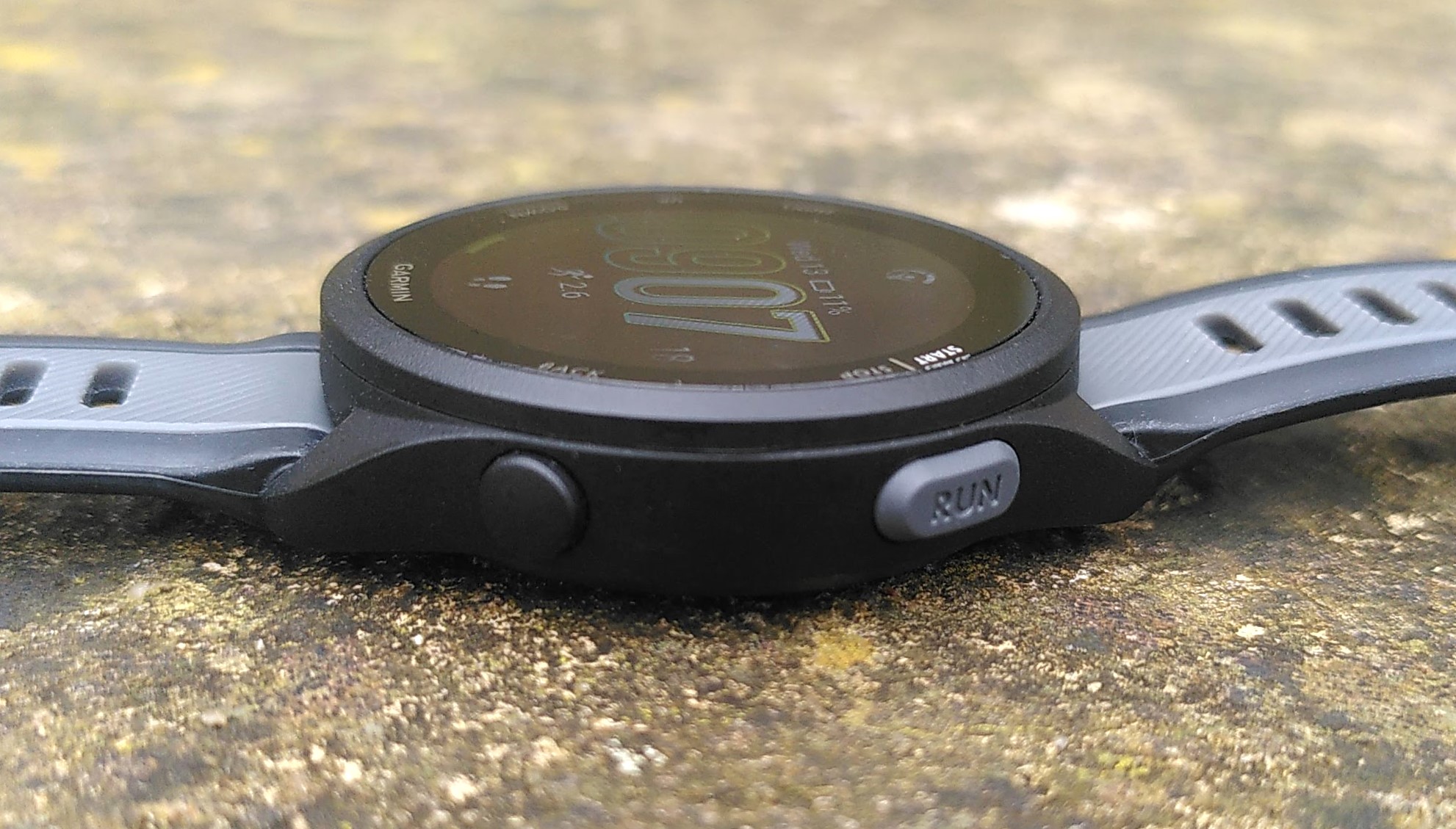
It’s charged using Garmin’s standard proprietary USB-C cable, which plugs securely into the case back. Here you’ll also find the optical heart rate sensor. It’s the same one you’ll find in older Garmin watches like the Fenix 7 and Forerunner 265, not the new one found on the Fenix 7 Pro and Epix Pro (Gen 2), but for an entry-level watch this is an acceptable compromise to keep costs down.
There’s no solar version available (Garmin hasn’t quite nailed the necessary tech for producing AMOLED displays with photovoltaic cells yet) but battery life is still respectable. The company quotes a life of 11 days in smartwatch mode, and 19 hours in GPS-only mode. In my experience, using the watch for a GPS-tracked activity five days a week including a long run on weekends, I needed to recharge it approximately every seven days.
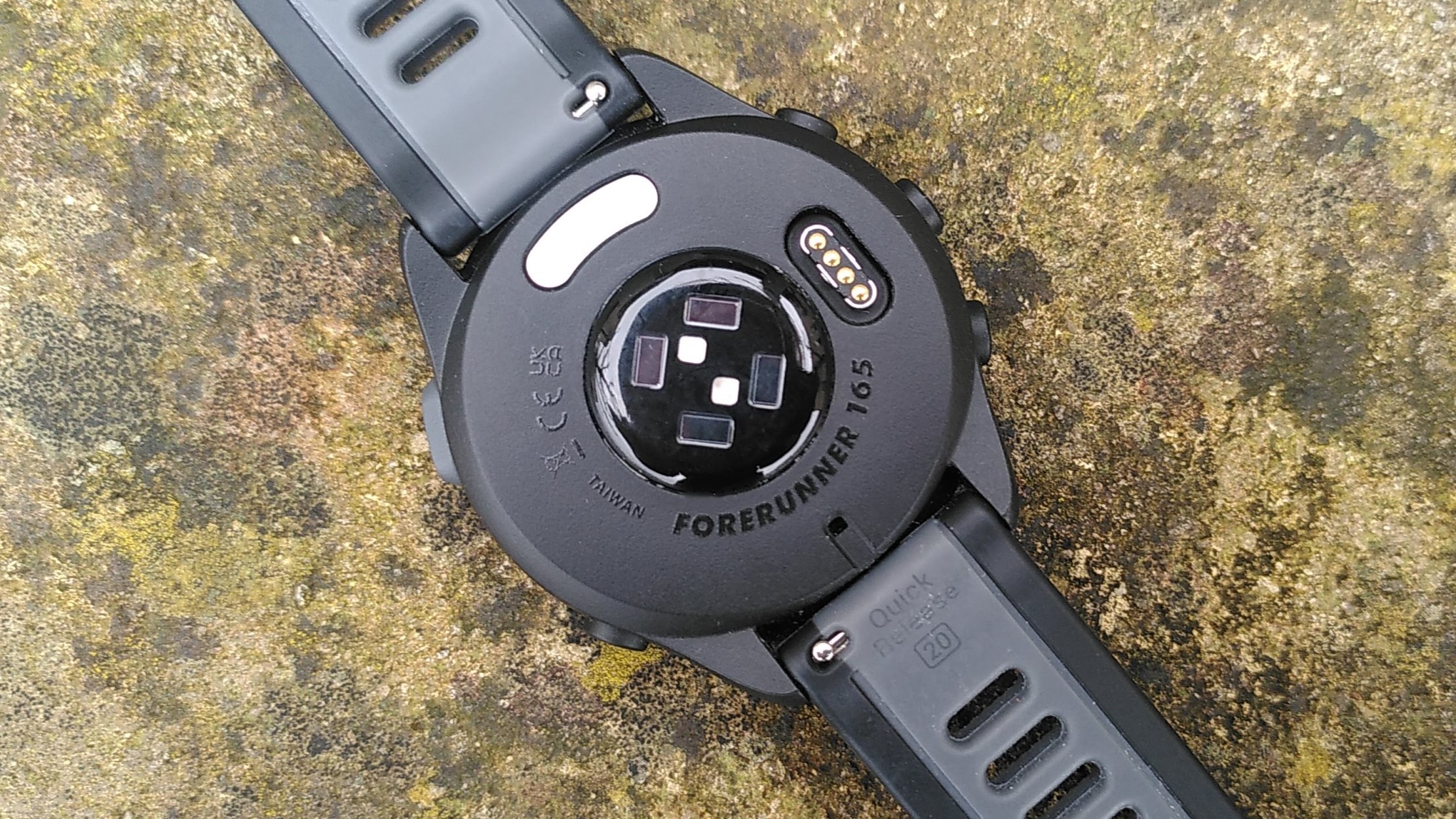
Garmin Forerunner 165: on the trails
The Forerunner 165 is simple and intuitive to use, with a logical layout of buttons and touch controls. I’ve used Garmin watches for many years so I’m used to flicking or tapping through the interface quickly, and the Forerunner 165 is silky smooth as you scroll through menus and glances (small widgets displaying health and fitness stats).
During several weeks of testing, including runs up to 22 miles and sweaty spin sessions, it never felt uncomfortable, and the case and strap are easily washed with soap and cool water when dirty (the watch is water-resistant to depths of 5m, so it has no problem being rinsed).
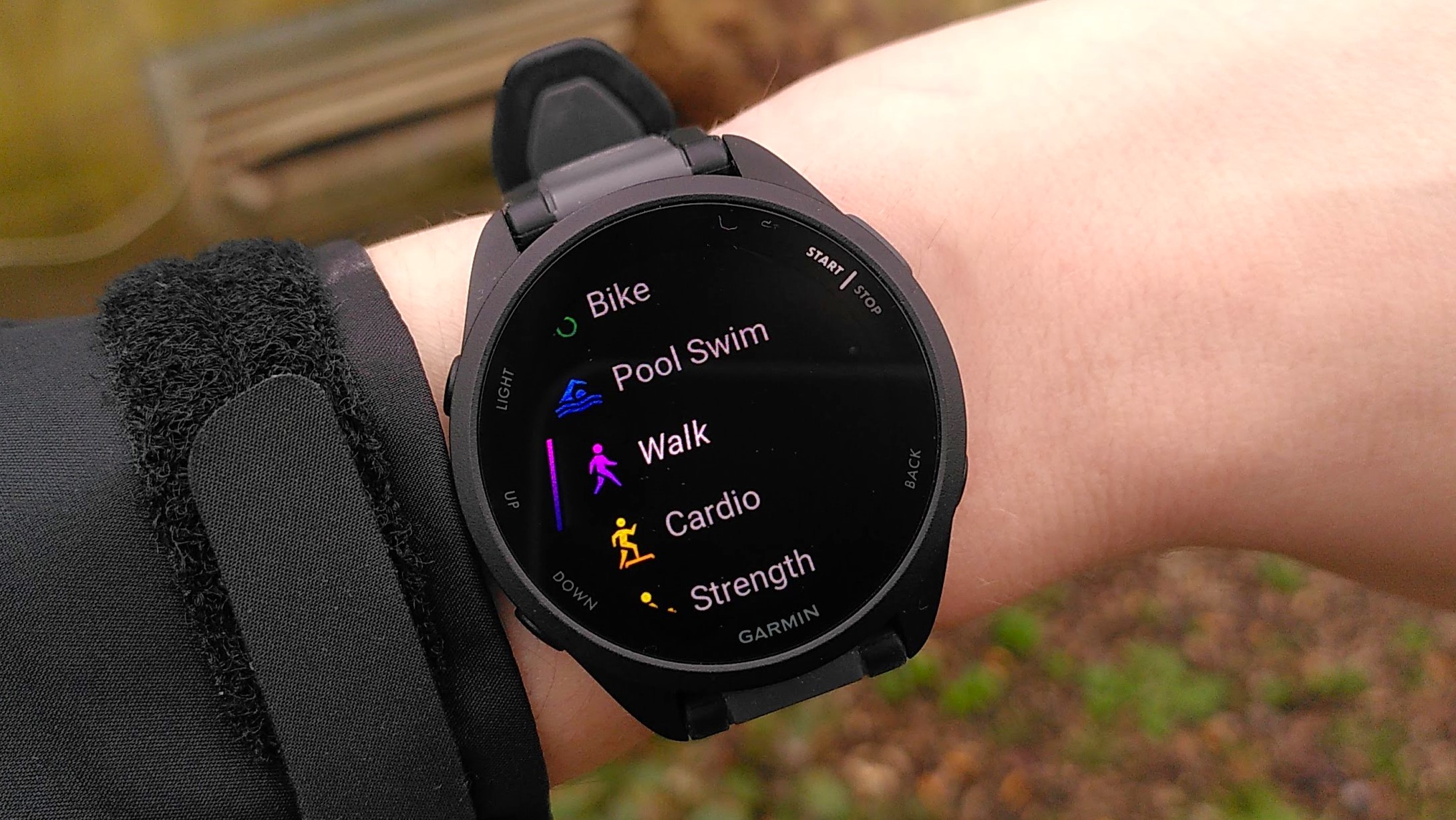
Although there are some additional activity tracking modes for occasional cycling, swimming and a handful of other sports, this is primarily a running watch. There’s no triathlon mode and you can’t connect it to gym equipment like indoor bike trainers, but there’s a rather impressive offering of tools to help you train for your first half marathon, or set a new 10k PB.
There are dedicated tracking modes for indoor and outdoor track running, road and trail running, and even ultra distances, which is a great variety for a watch at this price point. You also get daily workout suggestions to help improve your fitness and mix up your training (it’s particularly easy for beginners to get stuck in a rut), or you can follow a training plan created using Garmin Connect or imported from an app like TrainingPeaks. You can even set up a plan to help you prepare for a race, including a suitable tapering period.
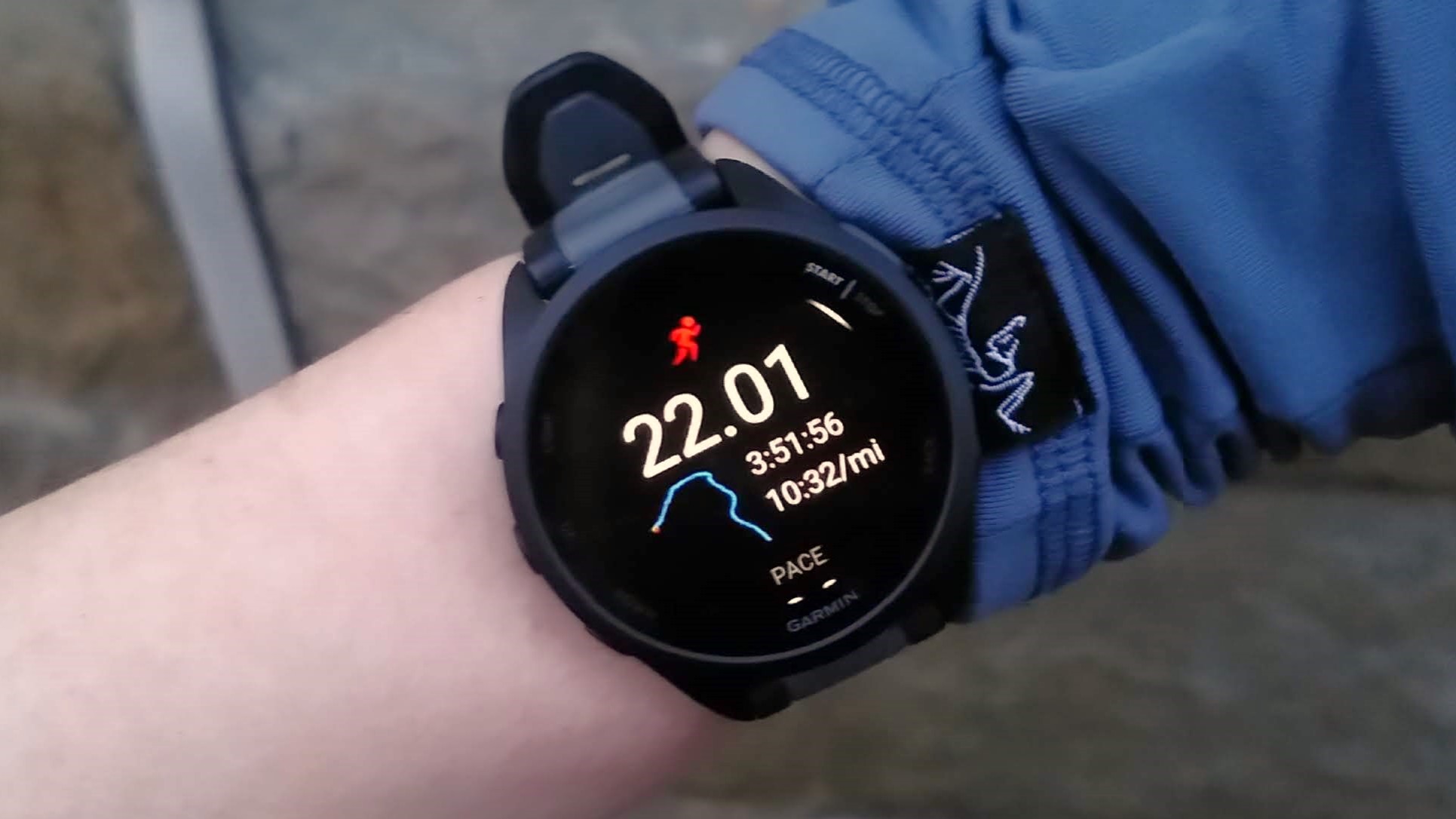
Once you’ve completed your workout you’ll be presented with a recovery estimate, which will give you an idea of how long it’ll be before you’re ready to tackle your next intense workout. This will count down over time, and can be affected by factors like poor sleep and extra activities.
The Forerunner 165 definitely isn’t just a Forerunner 55 with a new screen; it’s a more advanced device with several features the 55 is missing, including support for GPX routes created using the Garmin Connect app or a third-party tool. Making your own courses in Garmin Connect is easy, with a single point-to-point creation tool and heatmaps to show you the most popular streets, paths and trails in your area.
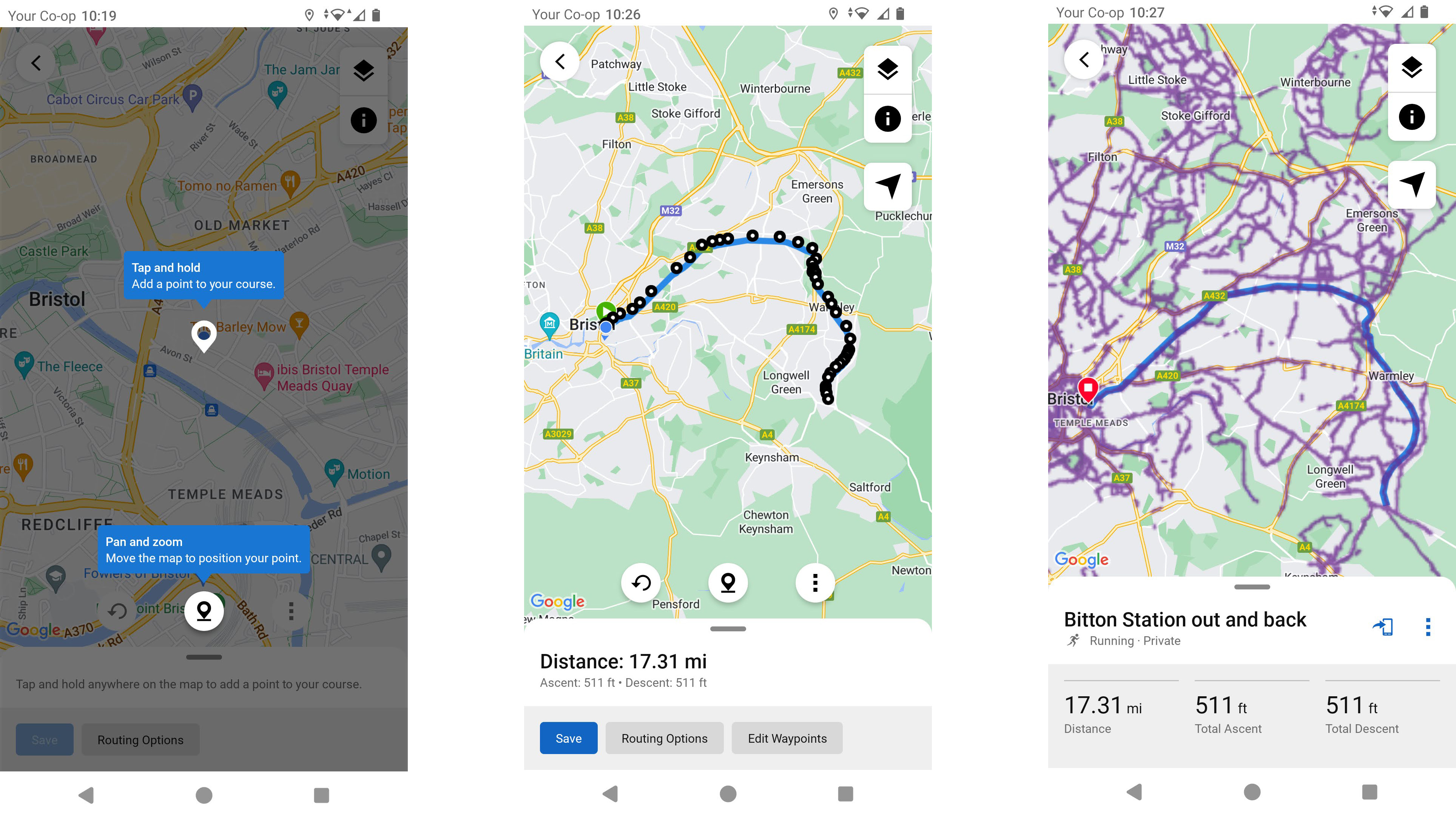
My biggest issue with the Forerunner 165 is its GPS performance. It takes a little longer to establish a satellite lock than most Garmin watches I’ve tested in recent years, which means you can’t start running immediately, but even though I waited for confirmation that it had achieved a lock before beginning, my runs were always measured slightly short.
Interestingly, the difference was always about 13 meters, whether I was running 5k or 21 miles. During my longer run, there were two occasions when the ‘GPS ready’ alert appeared partway through, suggesting that the satellite connection had been lost briefly. I recorded this run with both the Forerunner 165 and my Fenix 7S, and the map produced by the Forerunner 165 shows my start point as being two or three miles along the outward leg.
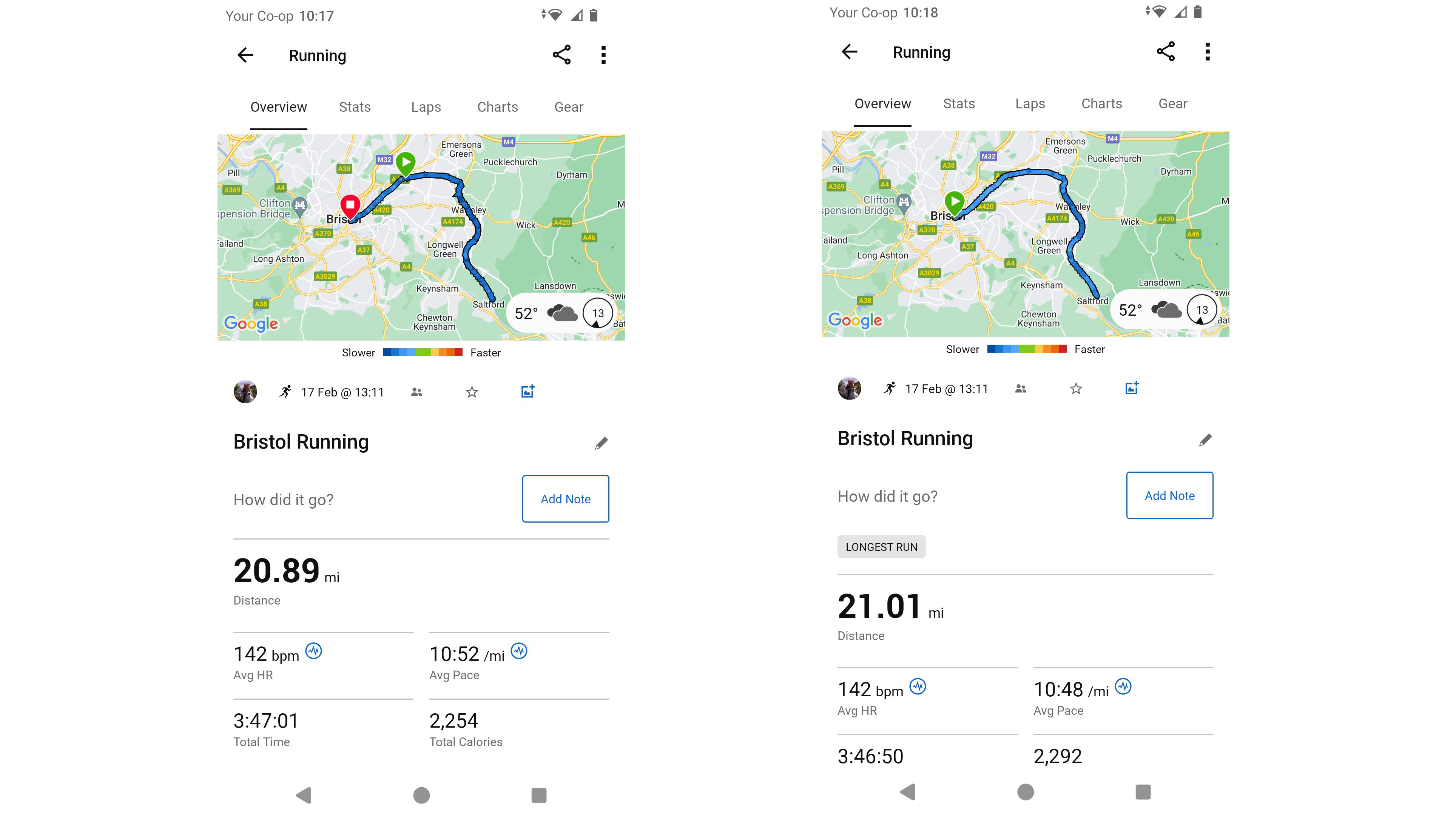
That kind of inconsistency won’t be a deal-breaker for most beginners, but it’s worth being aware of, and if you’re trying to shave seconds off a personal best, you’d be better served by the Forerunner 265 if your budget will stretch to it.
For cheaper options, check out our guide to the best cheap GPS watches.
The other significant problem I noticed involved nap tracking – a relatively new feature for Garmin, which automatically detects periods of sleep outside your usual bedtime hours. It has worked well with my Fenix 7S, but with the Forerunner 165 it seems to be hyper-sensitive, sometimes logging several hours of naps when I’m just sitting (and in one case, in the middle of a dental appointment).
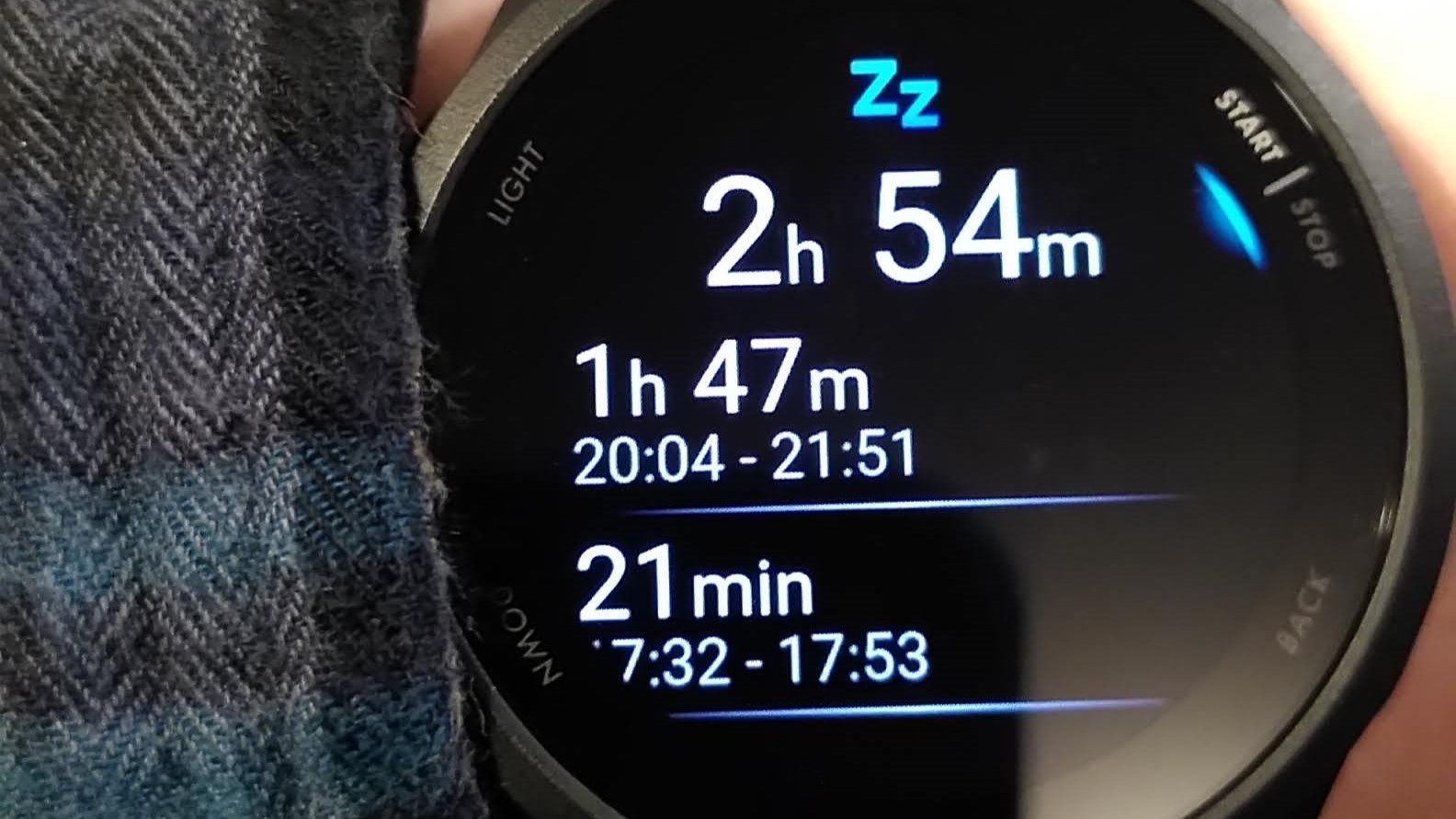
This doesn’t matter too much since the Forerunner 165 doesn’t have sleep coaching, but it’s a little annoying being ticked off for my poor sleep habits when I was actually at the hygienist and there’s currently no way to disable nap tracking, or delete naps that have already been recorded. Hopefully that will change with a future firmware update.
I'm not sure whether the GPS issue can be so easily fixed, and for the time being I'm probably still more likely to recommend the Forerunner 55, 255 or 265 to friends wanting their first dedicated running watch, depending on their budget and needs. The Forerunner 165 does fill a niche, but doesn't do it quite well enough.

Cat is Homes Editor at TechRadar and former editor of Advnture. She's been a journalist for 15 years, and cut her teeth on magazines before moving online. She helps readers choose the right tech for their home, get the best deals, and do more with their new devices.
